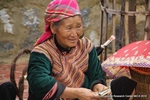Séminaire de NGUYEN Van Toi, doctorant Institut MICA - Université La Rochelle - Date : mardi 1er décembre 2015, 10h00 - Lieu : salle séminaire, Institut MICA, Hanoi University of Science and Technology
Intervenant :
M. NGUYEN Van Toi, doctorant en co-tutelle entre l'Institut MICA (Département Computer Vision) et le laboratoire L3I de l'Université de La Rochelle, France
Date : mardi 1er décembre 2015, 10h00
Lieu : salle "seminar room", 9ème étage, bâtiment B1, Institut MICA, Hanoi University of Science and Technology
Langue : le séminaire sera présenté en anglais
Résumé/abstract:
Nowadays, people want to interact with machines more naturally. One of the powerful com-munication channels is hand gesture. Vision-based approach has involved many researchers because this approach does not require any extra device. One of the key problems we need to resolve is hand posture recognition on RGB images because it can be used directly or integrated into a multi-cues hand gesture recognition. The main challenges of this problem are illumina-tion differences, cluttered background, background changes, high intra-class variation, and high inter-class similarity.
This thesis proposes a hand posture recognition system consists two phases that are hand detec-tion and hand posture recognition.
In hand detection step, we employed Viola-Jones detector with proposed concept Internal Haar-like feature. The proposed hand detection works in real-time within frames captured from real complex environments and avoids unexpected effects of background. The proposed detector outperforms original Viola-Jones detector using traditional Haar-like feature.
In hand posture recognition step, we proposed a new hand representation based on a good generic descriptor that is kernel descriptor (KDES). When applying KDES into hand posture recognition, we proposed three improvements to make it more robust that are adaptive patch, normalization of gradient orientation in patches, and hand pyramid structure. The improve-ments make KDES invariant to scale change, patch-level feature invariant to rotation, and final hand representation suitable to hand structure. Based on these improvements, the proposed method obtains better results than original KDES and a state of the art method.









